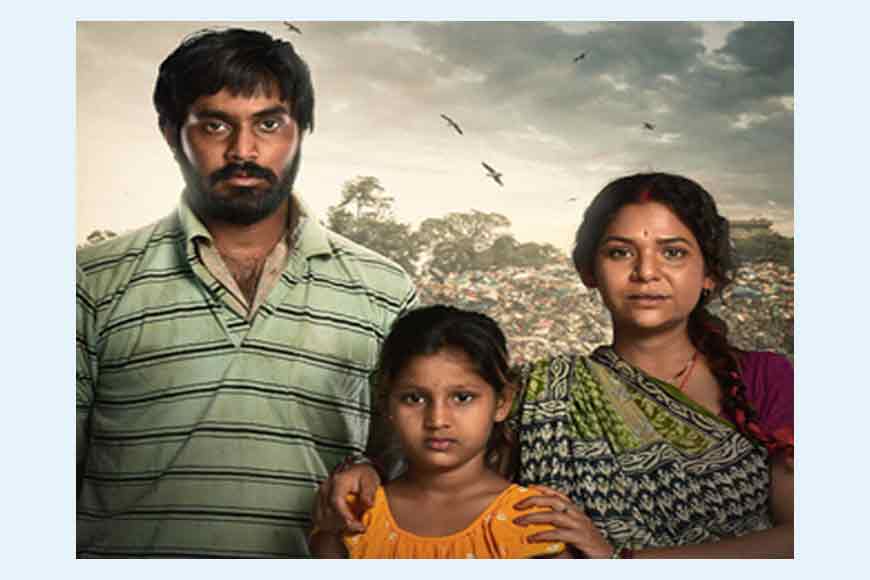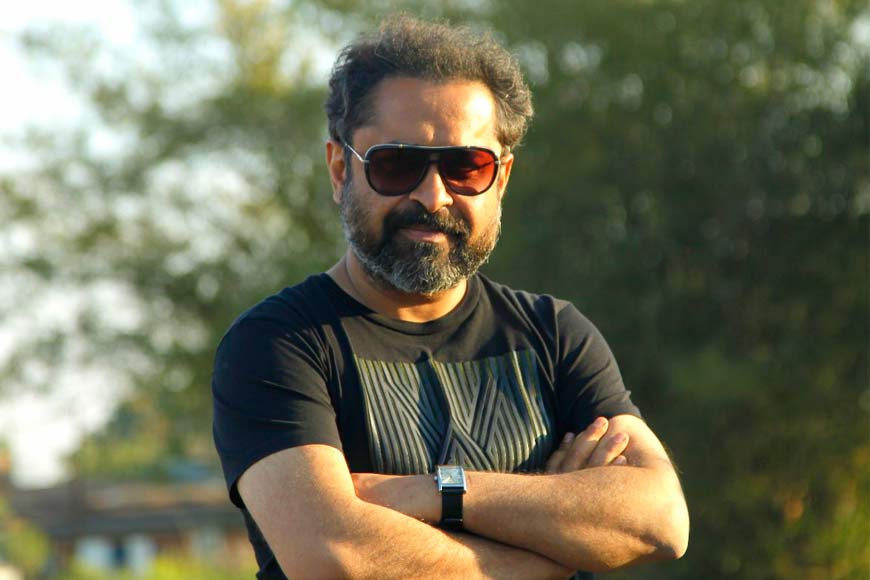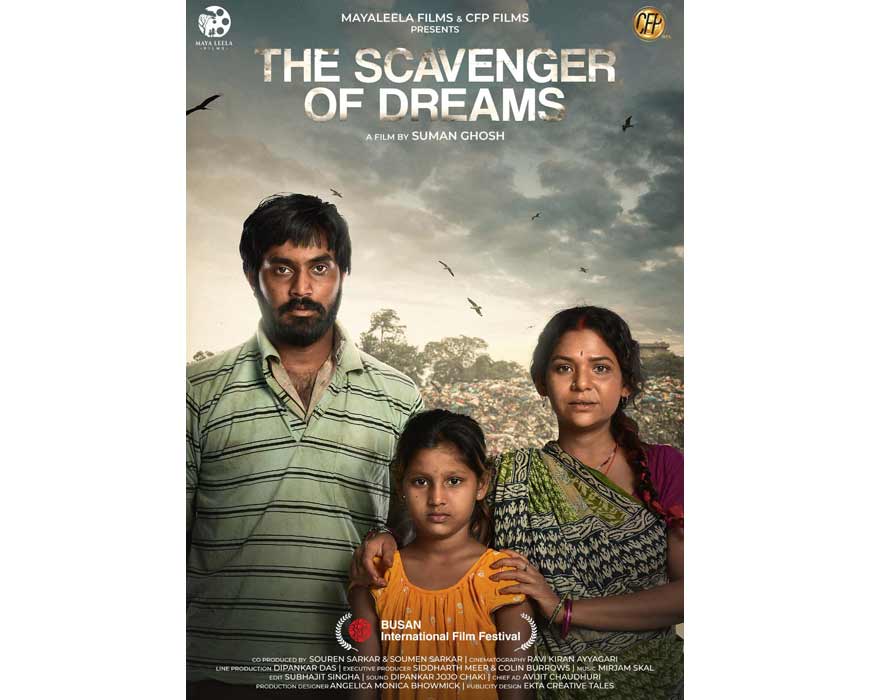Suman Ghosh’s ‘The Scavenger of Dreams’ reaches Busan Int’l Film Fest; Exclusive interview with Sudipta Chakraborty - GetBengal story

'The Scavenger of Dreams’, led by Sudipta Chakraborty and Shardul Bharadwaj
Joining this year on the list of ‘A Window on Asian Cinema’ section at the upcoming 26th Busan International Film Festival is 'The Scavenger of Dreams,' a hard-hitting film by director Suman Ghosh. The city film fraternity is all agog with excitement as Ghosh's film, 'The Scavenger of Dreams' will have its world premiere at the Busan Film Festival. The film focuses on Birju and Shona, a marginalized (dalit) couple and their young daughter, Munni, who live in a filthy slum, the quintessential underbelly of urban life in Kolkata and survive on the waste that the city generates. The family represents the thousands of ragpickers whose mundane routine revolves around travelling to the city’s prosperous neighborhoods every morning to collect trash that the city generates and deliver the assortment to waste dealers. This is big business and the only means of survival for many who become impervious to the muck and filthiness around them. Their souls dream of breaking free the fetters that reef them to the ground heaped with muck, musty air laden heavy with stench, the smoky sky and fetid atmosphere some day. Ghosh’s film narrates the story of the young couple who does not have much to desire from life except perhaps, making provisions for a wee-bit better future for their little daughter.
There have been several films documenting the lives of scavengers and their daily work routines in hazardous environments. Avinash Roy and Jasmine Kaur Roy jointly directed ‘Scavenging Dreams’ documenting the world of rag pickers and the business of waste. Mohan Kumar’s ‘The Mountain of Trash’ connects spirituality and garbage dumps by examining a garbage dump near Kolkata. Ishaan Ghose’s feature film ‘Jhilli’ delves in the dystopic landscape of Dhapa and unveils a delirious and slurred narrative of a group of friends who drift in and out of each other’s lives as they attempt to make a living from Dhapa. Suman Ghosh’s feature film explores the resilience of the human soul and explores myriad emotions while unfolding the marginal lives of those suspended at the peripheries of development. Shardul Bharadwaj, alumni of Film and Television Institute of India (FTII) and well-known stage, television and film actor, Sudipta Chakraborty have essayed the roles of the protagonists in the film.
 Director Suman Ghosh
Director Suman Ghosh
In a tête-à-tête with Get Bengal (GB), Sudipta Chakraborty (SC) said: “Director Suman Ghosh had read an article in the ‘New York Times’ published about three years ago about a rag picker who collected garbage and discarded household items and the ones he liked, he took them home to reuse them. He shared the story with me and casually said he would like to develop a feature film on this topic and it would be based entirely in Kolkata. Ghosh does not always follow the conventional method of writing a script before making a film. For this film, he mobilized his Kolkata team to do the research and the recce. The team members visited slums, spoke to waste collectors, took down notes meticulously about their daily activities, their mannerisms, way of communication, their eating habits etc. The extensive research programme went on for months before the shooting started. Suman did have a one-liner story and the rest he entrusted us to develop by observing the characters and using our acting skills. Once I stepped out of my comfort zone, I enjoyed going with the flow. In fact, we all, my co-actors, our production designer Monica (award-winning production designer Angelica Monica Bhowmik), cinematographer Ravi Kiran Ayyagari were all sucked into the organic process of the filmmaking and enjoyed the experience thoroughly. We would all sit for brainstorming sessions to develop the entire story. We all had suggestions and Suman would listen to them patiently and then decide on what suited his concept.” This was challenging indeed, especially because many of the cast including Shardul and crewmembers were from Mumbai. She continues, “Both I and Shardul spent days in the slums with the locals, observing their lifestyle, the way the ladies draped their sarees, the way they interacted etc. We spent hours with the scavengers, collected garbage like them just to get the hang of everything we were to portray. We were going to adapt to their lifestyle and our aim was to intrude into their lives, live their lives and blend perfectly with them to make the film real and the experiences palpable. This was an absolute organic process, an entirely new technique and I thoroughly enjoyed performing in the film. Previously, I had a similar experience while shooting for ‘Searching for Happiness.’ That film by Suman did not have any script.
GB: You are a veteran actor with a vast repertoire of work in different mediums like theatre, television and films. Did that make it easy for you to pick up the finer nuances of Shona’s characteristics and delineate in front of the camera?
SC: Being an actor, I have learnt to observe people around me from a very early age. Once I set out to portray a character, my basic homework starts with observation. There is no set textbook for actors you see, so we have to depend on our instincts and observation skills. I was lucky because the slum we frequented for our ‘homework’ in Garia, was close to the house where I lived in the past and I was acquainted with most of the slum dwellers. In fact, our former house help also lived in the same slum. Therefore, it was easy for me to strike up conversation with them or share their experiences. None raised an eyebrow or questioned me for hanging there the entire day. In fact, many of them shared anecdotes that I later incorporated in my character in the film. This time the director, his assistant, Shardul and I combined to transform an idea into the film.

GB: ‘The Scavenger of Dreams' will be premiered at the 26th edition of Busan International Film Festival in South Korea. What’s your take on this?
SC: I am super excited. This is the first time that my film is going to be premiered at one of the most significant film festivals in Asia. I am really looking forward to the event. In fact, I have already applied for visa and once the formalities are over, I am going to attend the fest that’s scheduled to be held from October 4 to 13 at the Busan Cinema Center. It is a dream-come-true for me.
Meanwhile, film buffs have been raving about the poster of ‘The Scavenger of Dreams’ after it was officially released. The poster by designer Ekta Bhattacharjee depicts a family where Birju and Shona are standing gawkily with their little daughter, with somewhat puzzled look of innocence writ large on her face, positioned between them. It is a hard-hitting photograph where the subjects have their stony gaze fixed at spectators outside the frame. A dumping ground is visible in the stark naked backdrop. The smoky gray sky encompasses the composition and there is no relief to temper the monotony of the overpowering bleakness. The evocative imagery jolts viewers to react and come to terms with a world we try to overlook or ignore. This film poster freezes time and communicates with the audience, thus ‘The Scavenger of Dreams’ continues to haunt the beholder.










